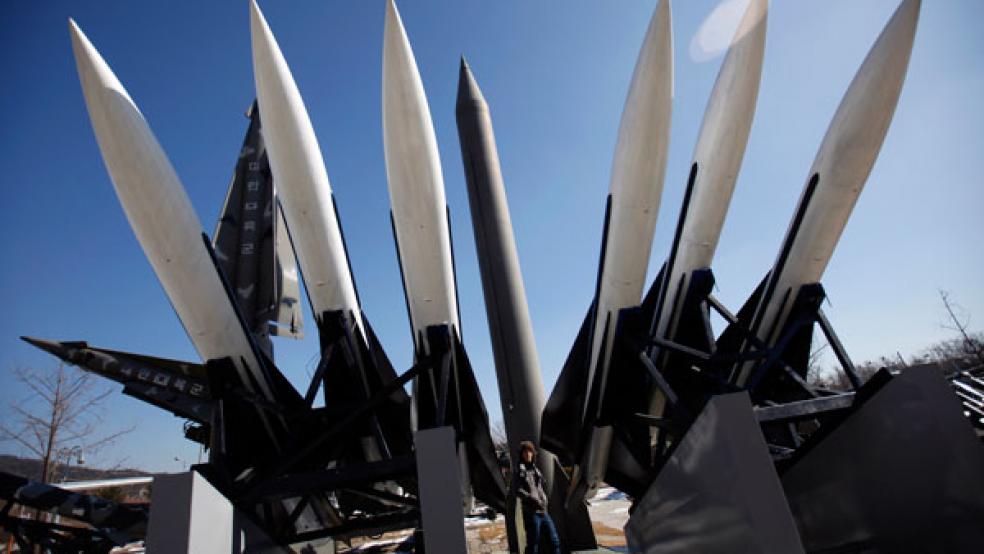America’s nuclear arsenal, an afterthought to most after the Cold War, are badly in need of upgrades that could cost up to a trillion dollars over the next 30 years in order to keep pace with nuclear powers like Russia and China, experts said.
Secretary of Defense Chuck Hagel made a rare visit to a nuclear weapons facility in Wyoming, the first time a DOD chief has visited a nuclear installation since 2008. His visit was a reminder of the country’s vast and largely unnoticed nuclear infrastructure.
Related: How the U.S.-Russia Rift Leads to a Nuclear Stalemate
For the most part, this infrastructure has been left untouched since the end of the Cold War nearly 20 years ago. According to Michaela Dodge, an analyst of defense and security policy at the Heritage Foundation, the United States has not been actively trying to develop nuclear weapons since. But rivals like Russia and China have active nuclear programs and have been developing new nuclear technology for the last two decades.
“They are conducting self-critical experiments. They have been maintaining a massive nuclear production base. They’ve been building new delivery systems,” she said in an interview. “In terms of capability, we are not on top when it comes to quantity, that’s for sure. During the cold war we built Ferraris of nuclear weapons. Whether states managed to catch up in the last 20 years is a question for the intelligence community.”

Hans M. Kristensen, director of the Nuclear Information Project at the Federation of American Scientists says even if the Russians and the Chinese have not caught up to the United States, the American nuclear infrastructure is badly in need of upgrades.
“There’s infrastructure, the factories that built this stuff, Cold War facilities are being replaced by modern facilities. This is causing problems because it’s very expensive to build. The administration is struggling to afford these things,” he said. “All these investment points have peaked and come together. You have investments needed in all of these systems. We have to build a whole new generation of nuclear submarines. At some point we’ll have to replace the land-based missiles. They’re planning to build a new fleet of bombers.”
Related: How North Korea Starved Its People for a Nuke
“The delivery systems, the factories, the warhead life extension programs that are planned, within the next decade, they are in the range of $215 billion,” Kristensen continued. “After that it will continue to increase even more. These are enormous investments.”
The Congressional Budget Office estimated that spending level could go even higher. In a December 2013 report to Congress, CBO estimated that upgrade over the next decade would cost $335 billion.
Kristensen said that it’s difficult to determine how much the government actually spends on the U.S. nuclear weapons program because agencies that support it are spread across government.
“I’ve seen studies argue that over the last 3 to 4 years, we spent something in the order of $10 to $30 billion,” he said. “Within the next three decades, the U.S. is projected to spend a trillion dollars on weapons to modernize and maintain nuclear forces.”
Undefined mission
All of this spending is happening without a clear nuclear strategy for the future. Kristensen said that most of U.S. nuclear planning is done with Russia in mind. Hostile countries like North Korea and Pakistan don’t have the capability to strike the United States.
“Russia is the only country that has an enormous nuclear force that could threaten the existence of the United States,” he said.
This spending also comes after President Obama pledged to reduce nuclear stockpiles last year in Berlin.
“It’s quite ironic in that he has visionary objective but in fact has made very small reductions and is modernizing every component of the nuclear establishment,” said Barry M. Blechman, co-founder of the Stimson Center, a think tank dedicated to international security. “You wonder what happened to his promise.”
Top Reads from the Fiscal Times:



